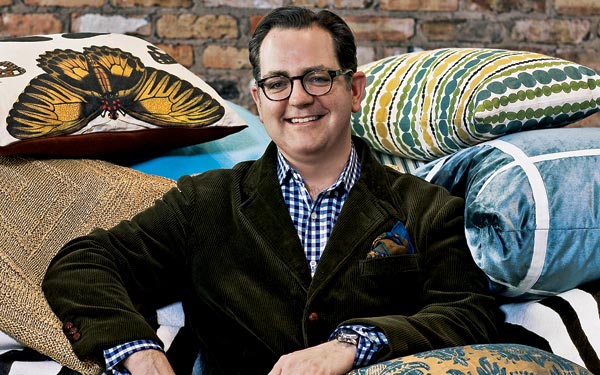
William Schumacher’s soft landing |
Pillows are the shoes of the furniture universe, with amazing powers disproportionate to their size. Much as a pair of Manolo Blahniks can dramatically alter an outfit, adding even a small pillow can make a real difference in a room. Throw on a few more, and you’re talking major statement.
How, then, can we use these highly influential adornments to our advantage? For advice, we turned to interior designer William Schumacher (312-419-9150; wsints.com); like many in his field, he wields the pillow as a mighty sword, using it cunningly to transform characterless spaces. We gave him a blank slate—a classic, cream-colored sofa from Room & Board (the Hawthorne two-cushion, in Doss; 55 E. Ohio St., roomandboard.com)—and asked him to create five distinct looks. The results prove that pillows are players, indeed.
For resource information, see Buyers Guide.
Photograph: Eric Hausman
Retro Glamour
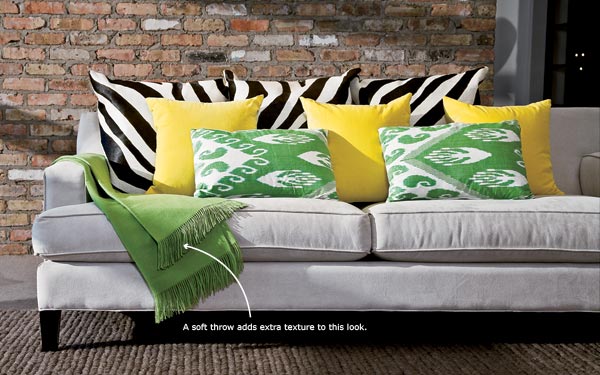 |
The circa-1960s Hollywood Regency style and the over-the-top glamour of L.A.-based interior designer Kelly Wearstler (she did the high-drama Viceroy hotel in Santa Monica) were the inspirations here. Think bold colors, animal prints, and unabashed theatrics—toned down ever so slightly, for livableness.
The Takeaway
1. The soft, loose-back cushions that come with the sofa were replaced with crisp square pillows to add visual depth and interest. This also allows you to comfortably fit more pillows on the sofa.
2. Pillows are equally intense—if not high-energy in color, then high-energy in pattern.
3. Matching sets are an important tenet of this look. A soft throw adds extra texture to this look.
Photograph: Eric Hausman
Moroccan Daybed
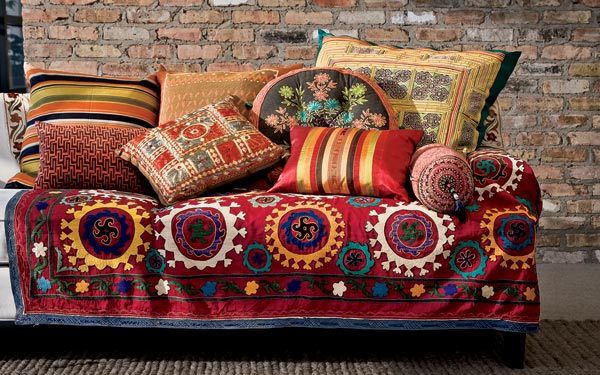 |
Schumacher hit ethnic shops—The Golden Triangle, Primitive, and even Cost Plus World Market—to convert this mild-mannered sofa into an exotic daybed, mixing expensive antique-fabric pillows with inexpensive ones."In a scheme this patterned," he says,"you’ll never notice how fine the seams are."
The Takeaway
1. Cover a plain-Jane couch with an interesting textile, such as this Suzani, a Central Asian tribal piece Schumacher bought at Primitive, as a base for a mass of rich color and pattern.
2. When you’re doing a scheme with this much pattern, don’t hold back—every pillow should have a strong design. (A solid-colored pillow would stick out like a sore thumb in this arrangement.)
3. Use bolsters to make a firm-armed sofa more comfortable. Bolsters also work well on high-armed sofas, where the natural armrest may be uncomfortably high for most people.
Photograph: Eric Hausman
Designer’s Special
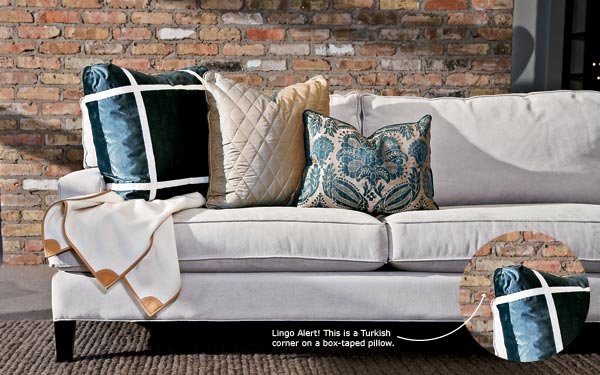 |
Described by Schumacher as"custom chic," this spread is all about quiet luxury. All three pillows are custom-made. The color palette is understated. And the materials are strictly high-end (diamond-quilted silk velvet, silk damask, cashmere, and leather on the Frette throw). This look, Schumacher says,"is best appreciated up close."
The Takeaway
1. To make a light-colored throw pillow pop against a light-colored sofa pillow, put a contrasting pillow between them.
2. Pillows get smaller as you progress toward the sofa’s center.
Photograph: Eric Hausman
Wicker Park Boho
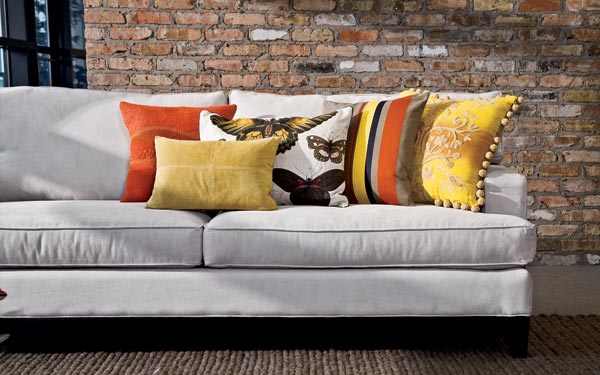 |
Aiming for a not-too-precious young artsy look, Schumacher pulled off vintage-inspired style without actually hitting the thrift stores. The printed-linen butterfly pillow from Jayson Home & Garden played a key role in establishing this particular mood and color scheme.
The Takeaway
1. Use patterned pillows as a starting point, repeating some of their colors in solid pillows. Always vary sizes.
2. Patterns are intentionally different in degrees of boldness so that they don’t fight with each other. The eye goes first to the butterflies and stripes, then to their less pushy neighbors. Ball fringe keeps things lively on a pillow with a quieter pattern.
3. The rectangular gold knitted wool pillow is both modern and retro feeling.
Photograph: Eric Hausman
Hamptons Beach House
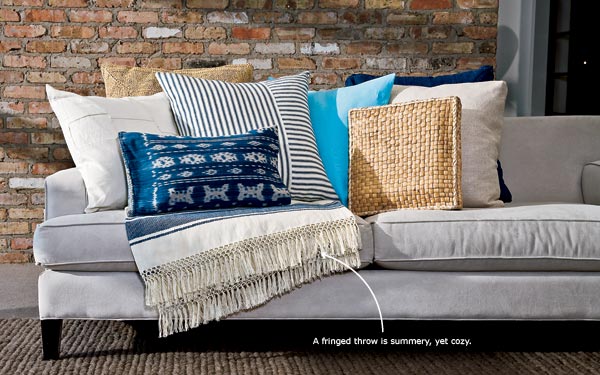 |
Schumacher was inspired by the clean, sophisticated set of Something’s Gotta Give (the 2003 film most famous for showing Diane Keaton in her birthday suit), which he believes borrowed freely from the light-filled, refined aesthetic of East Coast designer Victoria Hagan. He used the colors and textures of the beach, but avoided clichés like seashell and fish motifs.
The Takeaway
1. Humble materials such as cotton and linen keep the overall feeling informal.
2. Raffia and straw bring to mind the rough texture of sand, creating a contrast with the smoother fabrics.
3. Ikat textiles make excellent sarongs—and covers for pillows that evoke the seaside. The fabric for the navy-and-cream pillow was purchased on eBay.
Photograph: Eric Hausman


